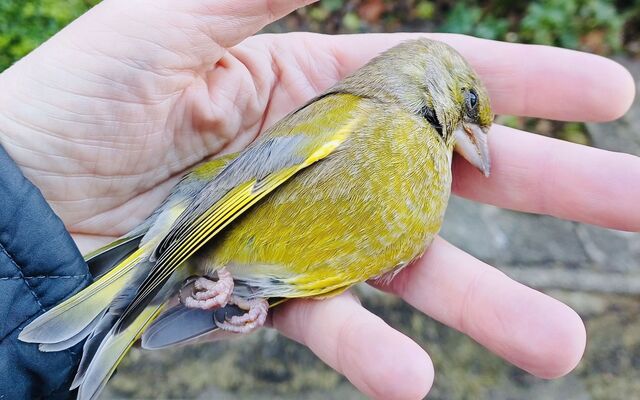THE postman had a lucky escape – as did the trick-or-treaters.
And Dúlra learned a lesson – don’t put wooden nestboxes on your chimney pot!
The nestbox lasted four years before finally succumbing to the elements this week. And it came crashing down, sliding down the roof slates before landing with a thump at the front door.
Luckily, no one was there to meet it or they would have been nursing a very sore head!
Dúlra had high hopes for the sparrow ‘terrace’, a set of three nest sites side by side in the one box. Sparrows are much-overlooked sociable birds that love company – so the terrace was designed so that three families could all raise their families side-by-side like neighbours in the same street. None took up the offer, but inside the smashed box there were plenty of bird droppings, so they must have been roosting there at night, maybe checking the house out before finally making the big decision to move in.
It could have been a tragedy had the box fallen during breeding season when there were eggs or even worse, chicks inside – although it probably wouldn’t have fallen when the weather was good. It must have been one of this week’s winter gusts that finished it off.
Sadly, the roof remains there anchored to the chimney pot – at least the screws did their job. And Dúlra had actually varnished the box with a wood protector, hoping it would last for decades. Maybe these boxes should come with a warning: this will disintegrate in four years.
It’s a problem also faced by people who put up swift boxes – they too have a shelf life. The swift group started by expert Mark Smyth finds that the wood gradually rots through the screw and many boxes eventually fall – the only way to ensure birds have a permanent and safe place to live is through ‘brick’ nest boxes which are built into walls.
Dúlra has other nestboxes around the house in less exposed areas, and these boxes will last for many years to come. But the local sparrows will probably be spooked that their nice roosting site has suddenly disappeared – it’ll take a while to build up their rust again.
The North Coast is the place to see our rarest birds. It’s here that they first meet land in winter after their travels across the sea. And this week the lucky residents of Portrush were enjoying two species that would brighten up anyone’s day – snow buntings and twites.
To many people these would be nondescript birds – a bit like a sparrow – but they are far from everyday birds. Twites are close to extinction as a breeding bird in Ireland because all their breeding grounds among heather have been given over to sheep.
Snow buntings don’t breed here at all, preferring to build their nests in fissures among the snow-covered tundra in the Arctic Circle, with a headful deciding recently to nest on Scotland’s highest peaks.
Oops.... the nest box slipped from Dúlra's chimney
But they come here in winter to enjoy what for them are mild winters. Dúlra has never seen one – only the hardiest hillwalker has a chance to come across them at the top of Divis on the coldest winter’s day. One or two readers have reported spotting them – and Dúlra has layered up and gone in search of them when they’ve been reported on Divis, but so far to no avail.
Maybe it would be easier just to take a trip to Ramore Head beside Portrush where a flock has gathered this week.
Dúlra knows where he can see a twite – a small flock of them spend winter feeding on the coastal path of Whitehead, and it’s in the car park there that you’ll always find a merry band of birdwatchers, binoculars and cameras in hand, getting a glimpse of the wee brown finch that is on the verge of extinction as a breeding bird in Ireland.
Maybe the snow bunting will like what they find on Divis and stay to breed, as they did in Scotland. It’s incredible to think that this bird DEMANDS cold conditions and won’t breed unless there’s snow on the ground. In Iceland, it starts breeding when the temperature is -30C!
Global warming is a grave threat to snow buntings, gealóg shneachta in Irish – not because it doesn’t like warm weather, but because it brings other bird species that will eat its food. This is a bird, perhaps uniquely, that likes it tough, finding tiny seeds under the snow of Divis while other 'softer' birds head down to the city to survive winter on bird feeders. It might be a tiny bird, but it's got the biggest heart of them all.
* If you’ve seen or photographed anything interesting, or have any nature questions, you can text Dúlra on 07801 414804.







